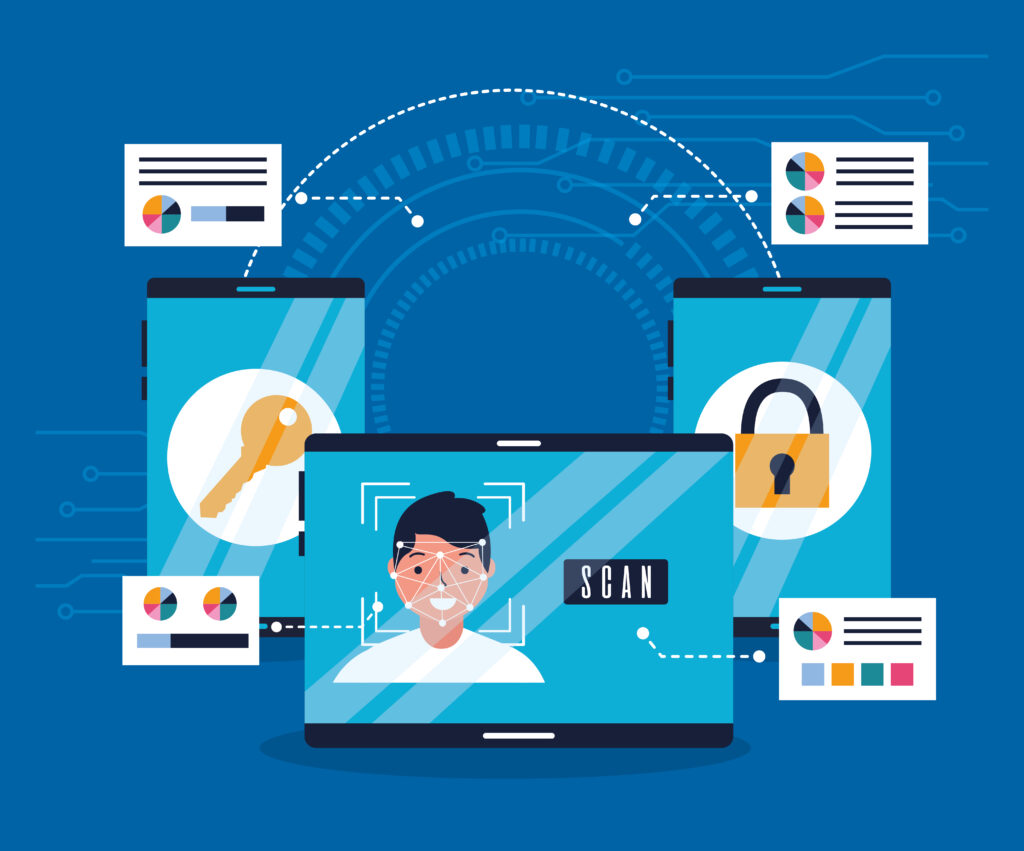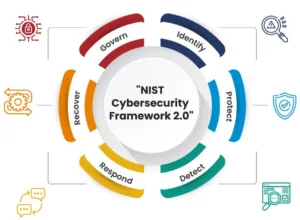
Table of Contents
Introduction
Imagine a world where our deepest secrets, personal information, and cherished memories are just a click away from falling into the wrong hands. In today’s digital age, where our lives intertwine seamlessly with technology, the importance of security has never been more crucial. It’s time we prioritize safeguarding ourselves, our loved ones, and our digital identities in a world teeming with cyber threats. Let’s embark on a journey to explore the power of human-centric security design and discover how it can revolutionize our digital experiences for a safer, more protected future.
In the fast-paced and ever-evolving world of technology, it’s easy to get lost in the complexity of security systems and protocols. But what if we shift our focus to the core of it all: the people who rely on these systems every day? That’s where the concept of human-centric security design comes into play.
Human-centric security design puts people at the heart of security measures, acknowledging that we, as individuals, are the ultimate target and the ones who must navigate the digital landscape. It recognizes that security shouldn’t be an obstacle or an afterthought, but rather a seamless integration that empowers us to use technology with confidence and peace of mind.
By embracing this approach, we break away from the traditional mindset that security is solely about building impenetrable fortresses of code and encryption. Instead, we start thinking about how security can enhance our overall experience, making it more intuitive, user-friendly, and aligned with our needs.
At its core, human-centric security design is about understanding human behavior, emotions, and limitations when it comes to digital interactions. It means designing systems that prioritize usability, ensuring that security measures don’t become cumbersome or frustrating hurdles in our daily lives. It’s about empowering us to take control, providing clear communication and actionable insights so that we can make informed decisions about our own security.
Human-Centric Security Design and its Key Principles
Human-centric security design is an approach to designing systems, processes, and technologies with a primary focus on the needs, capabilities, and behaviors of human users. It recognizes that humans are integral to the security equation and seeks to create security solutions that align with their natural tendencies, cognitive abilities, and daily routines.
The key principles of human-centric security design can be summed up as follows:
1. Usability: Security measures should be intuitive, simple to understand, and easy to use. They should not burden users with complex procedures or require specialized technical knowledge. By making security accessible and user-friendly, individuals are more likely to adopt and follow the recommended practices.
2. Awareness: People cannot be expected to adhere to security practices if they are not aware of the risks or understand the potential consequences. Human-centric security design emphasizes the importance of raising awareness about security threats and educating users on how to recognize and respond to them effectively.
3. Empathy: Recognizing that humans have limitations, both cognitive and emotional, human-centric security design takes into account the frustrations, motivations, and concerns of users. It aims to empathize with their experiences and design security measures that minimize stress, anxiety, and resistance while maintaining effectiveness.
4. Flexibility: Humans have diverse needs, preferences, and circumstances. Human-centric security design acknowledges this variability and provides flexible options that accommodate different user profiles, contexts, and levels of expertise. By offering adaptable security solutions, individuals can choose what works best for them without compromising protection.
5. Positive reinforcement: Rather than solely relying on punishments or negative consequences for non-compliance, human-centric security design focuses on positive reinforcement. It encourages and rewards desired security behaviors, making security practices more engaging, motivating, and sustainable in the long run.
6. Continuous improvement: Recognizing that security threats evolve over time, human-centric security design emphasizes the need for ongoing evaluation and improvement. It encourages feedback from users, fosters a culture of learning, and embraces iterative design processes to adapt security measures to changing user needs and emerging risks.
By prioritizing the human element in security design, human-centric security design aims to create a harmonious relationship between users and security measures. It seeks to empower individuals to take an active role in safeguarding their digital and physical well-being while ensuring that security solutions are practical, user-friendly, and effective.
Benefits of Human-Centric Security Design
1. Empowering User Confidence: Human-centric security design instills a sense of confidence and trust in individuals as they interact with technology. By prioritizing usability and intuitive interfaces, it eliminates the frustration of complex security measures, empowering users to navigate digital platforms with ease.
2. Enhanced User Experience: Gone are the days of sacrificing convenience for security. Human-centric security design strikes a delicate balance between safeguarding sensitive data and providing a seamless user experience. It ensures that security measures integrate seamlessly into our daily lives, without impeding our productivity or enjoyment.
3. Proactive Defense: With human-centric security design, individuals become active participants in their own security. By emphasizing education and awareness, it equips users with the knowledge and tools to recognize and mitigate potential risks. This proactive approach empowers individuals to make informed decisions and take preventive measures, reducing the likelihood of falling victim to cyber threats.
4. Trust and Confidence in Technology: Human-centric security design fosters trust and confidence in digital platforms and services. When users feel that their security is prioritized, they are more likely to engage with technology, share information, and explore new possibilities. This trust strengthens the foundation of our digital society and fuels innovation.
How it shifts the focus from purely technical aspects to human factors
Human-centric security design shifts the focus from purely technical aspects to human factors by recognizing that humans play a crucial role in the security equation. Traditionally, security measures have been predominantly designed with a heavy emphasis on technical aspects, such as encryption, firewalls, and authentication protocols. While these technical measures are important, they often neglect the human element.
By adopting a human-centric approach, security design takes into account the needs, behaviors, and limitations of human users. It acknowledges that humans are fallible, have diverse skills and knowledge levels, and are susceptible to social engineering and cognitive biases. Rather than expecting users to conform to complex technical requirements, human-centric security design adapts the security measures to fit the capabilities and realities of the users.
For instance, instead of relying solely on strong passwords that are difficult to remember, human-centric security design might incorporate alternative authentication methods that are both secure and user-friendly, such as biometrics or multi-factor authentication. It recognizes that people tend to reuse passwords or choose easily guessable ones, and provides solutions that mitigate these risks while ensuring a positive user experience.
Human-centric security design also places a strong emphasis on usability. It aims to make security measures intuitive, simple, and easy to understand and use. This involves designing clear and concise security interfaces, providing helpful guidance and instructions, and minimizing unnecessary complexity. By reducing the cognitive load and making security practices more accessible, individuals are more likely to adopt and follow recommended security procedures.
Furthermore, human-centric security design raises awareness about security risks and educates users on how to recognize and respond to them effectively. It emphasizes the importance of engaging and empowering users to become active participants in their own security. This may involve providing regular training, alerts, and educational materials that address common threats and promote best practices.
In summary, human-centric security design recognizes that humans are an integral part of the security equation and shifts the focus from purely technical aspects to human factors. It acknowledges the limitations and capabilities of users and designs security measures that align with their needs, behaviors, and cognitive abilities. By incorporating human factors into security design, it creates solutions that are more usable, accessible, and effective in protecting individuals and their assets.
Practical Strategies for Integrating Human-Centric Security Design
Integrating human-centric security design requires a comprehensive and practical approach that considers the unique needs and behaviors of users. Here are some practical strategies to effectively incorporate human-centric security design:
1. User-Centered Design: Adopt a user-centered design approach that involves actively engaging users throughout the design process. Carry out user research to understand their requirements, behaviors, and pain points. Use this feedback to inform the design of security measures and iteratively test and refine solutions based on user input.
2. Simplify and Streamline: Simplify security procedures and streamline user interactions to minimize cognitive load and user frustration. Reduce the number of steps, eliminate unnecessary complexity, and provide clear instructions and guidance. Strive for intuitive and user-friendly interfaces that require minimal effort and technical expertise.
3. Contextualize Security: Recognize that different users may have varying levels of security knowledge and risk awareness. Tailor security measures to different user profiles and contexts. Provide options for users to customize security settings based on their preferences and comfort levels, while ensuring that minimum security requirements are met.
4. Continuous Education and Awareness: Promote ongoing education and awareness about security risks and best practices. Provide regular training sessions, informative content, and real-world examples to help users understand the importance of security and how it relates to their daily activities. Foster a culture of security consciousness and encourage users to actively participate in their own security.
5. Positive Reinforcement: Use positive reinforcement techniques to motivate and reward users for adopting secure behaviors. Offer incentives, recognition, or rewards for demonstrating good security practices. Celebrate milestones and successes to encourage a positive attitude towards security.
6. Feedback and Reporting Mechanisms: Establish feedback and reporting mechanisms for users to report security concerns, provide suggestions, and seek assistance. Actively respond to user feedback, address reported issues promptly, and incorporate user suggestions into future security iterations. This helps build trust and fosters a collaborative approach between users and security designers.
7. Regular Evaluation and Improvement: Continuously evaluate the effectiveness of security measures through user feedback, security incident analysis, and performance metrics. Identify areas for improvement and iteratively enhance security measures based on user needs and emerging threats. Regularly update security policies and practices to align with evolving user behaviors and technological advancements.
8. Multidisciplinary Collaboration: Foster collaboration between security experts, designers, psychologists, and other relevant stakeholders to ensure a holistic approach to human-centric security design. Integrate diverse perspectives and expertise to address both technical and human factors effectively. By implementing these strategies, organizations can successfully integrate human-centric security design into their systems and processes. This approach not only enhances the security posture but also empowers users, promotes positive security behaviors, and creates a more user-friendly and resilient security environment.
Successful examples of organizations prioritizing Human-Centric Security Design
Several organizations have recognized the importance of human-centric security design and have successfully implemented strategies to prioritize the needs and behaviors of users. Here are a few notable examples:
1. Google: Google has been proactive in adopting human-centric security design principles. They have focused on usability and user education to enhance security. For example, Google’s two-factor authentication (2FA) implementation provides multiple options for users to choose from, including push notifications, security keys, and text messages. This flexibility allows users to select the authentication method that suits their preferences and comfort level, making it easier for them to protect their accounts.
2. Duo Security: Duo Security, a cybersecurity company acquired by Cisco, emphasizes usability and simplicity in their security solutions. They provide multi-factor authentication tools that are designed to be user-friendly and intuitive. Duo’s authentication prompts are clear and easy to understand, ensuring that users can easily verify their identity and protect their accounts without added confusion or frustration.
3. Dropbox: Dropbox has integrated human-centric security design principles into their platform. They prioritize user education and awareness by providing helpful resources and notifications about security best practices. Dropbox also offers features like password managers and file activity tracking to empower users with better control over their data and to increase transparency regarding their account’s security.
4. Microsoft: Microsoft has made significant strides in implementing human-centric security design across their products and services. They prioritize usability and accessibility in their security features, aiming to make security practices easier for users to adopt and follow. Microsoft has incorporated features like Windows Hello for passwordless authentication, which allows users to log in using biometric data or secure PINs, reducing reliance on passwords and enhancing security.
5. OpenAI (AI Dungeon): OpenAI’s AI Dungeon, a popular text-based adventure game, prioritizes human-centric security design to protect user data. They use end-to-end encryption to secure user interactions and employ privacy-preserving techniques to ensure sensitive data remains confidential. OpenAI also provides clear information about data usage and user controls, empowering players to make informed decisions about their privacy and security.
These examples demonstrate how organizations across different sectors have embraced human-centric security design principles. By focusing on usability, user education, customization, and continuous improvement, these organizations have successfully integrated security measures that align with user needs, behaviors, and preferences. They serve as valuable models for other companies looking to enhance their security practices while putting users at the forefront of their designs.
Potential Challenges and Limitations of Human-Centric Security Design
While human-centric security design offers numerous benefits, it also faces certain challenges and limitations that organizations should be aware of. Here are some potential challenges and limitations to consider:
1. User Compliance: One challenge is ensuring user compliance with security measures. Despite designing user-friendly security solutions, there may still be instances where users choose convenience over security or neglect recommended practices. Overcoming user resistance and fostering a security-conscious culture remains a constant challenge in human-centric security design.
2. Balancing Usability and Security: Striking the right balance between usability and security can be a delicate task. Simplifying security measures to enhance usability may introduce potential vulnerabilities. Designers must carefully consider the trade-offs and find ways to ensure that security measures are effective without overly burdening users or compromising their safety.
3. Cognitive Biases and Human Fallibility: Humans are susceptible to cognitive biases and errors, which can impact their decision-making and adherence to security practices. Designers must take into account these inherent human limitations and implement measures to mitigate their effects. However, it is challenging to design foolproof systems that can entirely eliminate human error or overcome deeply ingrained biases.
4. Evolving Threat Landscape: The threat landscape is constantly evolving, with new vulnerabilities, tactics, and attack vectors emerging regularly. Human-centric security design must stay agile and adaptable to address evolving threats. It requires continuous monitoring, evaluation, and updates to ensure that security measures remain effective and relevant.
5. Skill and Knowledge Gaps: Human-centric security design assumes a certain level of user knowledge and technical proficiency. However, not all users possess the same level of understanding or expertise. Designing solutions that cater to users with varying skill levels can be challenging. Organizations need to consider the needs of both novice users who require more guidance and advanced users who desire flexibility and customization.
6. Implementation and Scalability: Implementing human-centric security design across an organization can be complex and resource-intensive. It requires a coordinated effort to align processes, technologies, and user education initiatives. Additionally, scaling these solutions to accommodate a growing user base or diverse environments can present logistical challenges that need to be carefully addressed.
7. Privacy Concerns: Human-centric security design often involves collecting and analyzing user data to enhance security measures. Balancing the need for data collection with user privacy expectations is essential. Organizations must establish transparent data handling practices, obtain informed consent, and adhere to privacy regulations to build trust and ensure that user privacy is protected.
While these challenges exist, organizations can overcome them through continuous improvement, collaboration with users, ongoing user education, and a commitment to user-centric design principles. By addressing these limitations, organizations can enhance the effectiveness of human-centric security design and better protect users and their assets.
Emerging Technologies and Approaches that support Human-Centric Security Design
Emerging technologies and approaches are playing a significant role in supporting human-centric design, enhancing security measures, and improving the user experience. Let’s explore some of these exciting developments:
1. Biometrics: Biometric authentication methods, such as fingerprint recognition, facial recognition, and iris scanning, are gaining popularity in human-centric security design. These technologies leverage unique physiological or behavioral characteristics of individuals, providing secure and convenient authentication options. Biometrics eliminate the need for complex passwords and make the authentication process more natural and user-friendly.
2. Behavioral Analytics: Behavioral analytics leverage machine learning algorithms to analyze user behavior patterns and detect anomalies that may indicate potential security threats. By monitoring user actions, such as typing patterns, mouse movements, and application usage, these systems can identify suspicious activities and trigger appropriate security measures. Behavioral analytics enhance security without significant user intervention, providing a seamless and unobtrusive security experience.
3. Adaptive Authentication: Adaptive authentication systems utilize contextual information, such as device characteristics, user location, and behavioral patterns, to dynamically adjust the level of security required for a given user or transaction. By considering multiple factors, these systems can adapt and provide the appropriate level of security without unnecessarily burdening users. This approach improves the user experience by reducing unnecessary authentication steps while maintaining robust security.
4. Privacy-Preserving Technologies: Privacy-preserving technologies, such as secure multiparty computation, homomorphic encryption, and zero-knowledge proofs, enable secure processing of sensitive data without revealing the actual information. These technologies support human-centric security design by safeguarding user privacy while allowing organizations to collect and analyze data for security purposes. By deploying privacy related technologies, organizations can strike a balance between security and privacy concerns.
5. User-Centric Threat Intelligence: User-centric threat intelligence focuses on providing personalized threat information and actionable recommendations to users. By leveraging machine learning and AI algorithms, these systems can analyze user-specific data, such as browsing habits, social media interactions, and online activities, to generate customized security alerts and guidance. User-centric threat intelligence empowers individuals with relevant, real-time information, enabling them to make informed decisions and actively participate in their own security.
6. Gamification: Gamification techniques integrate game elements, such as challenges, achievements, and rewards, into security practices to make them more engaging and motivating. By transforming security tasks into enjoyable activities, gamification encourages users to adopt and maintain secure behaviors. This approach leverages human psychology, tapping into our natural inclination for competition and rewards, to drive positive security outcomes.
As these emerging technologies and approaches continue to evolve, they hold great promise for supporting human-centric security design. By harnessing the power of these technologies, organizations can create security solutions that are not only effective but also user-friendly, intuitive, and aligned with human needs and behaviors.
Conclusion
In conclusion, human-centric security design has the potential to bring about a positive impact on individuals, organizations, and society as a whole. By placing the needs, behaviors, and capabilities of users at the forefront, security measures can become more effective, accessible, and user-friendly. Here are some closing thoughts on the potential positive impact of human-centric security design:
1. Enhanced Security: Human-centric security design ensures that security measures are designed with a deep understanding of human factors, resulting in solutions that are more resilient and adaptive to emerging threats. By addressing the limitations and vulnerabilities associated with human behavior, security systems can better protect individuals and their assets.
2. Improved User Experience: When security measures are user-centric, they are designed to be intuitive, seamless, and compatible with users’ daily routines. By simplifying processes, reducing complexity, and offering user-friendly interfaces, individuals can engage with security practices more easily and without undue frustration or resistance.
3. Empowerment and Awareness: Human-centric security design empowers individuals to actively participate in their own security. By raising awareness, providing education, and offering personalized guidance, users become informed decision-makers who can better understand risks, recognize threats, and take appropriate actions to protect themselves.
4. Trust and Confidence: When security measures align with user needs and behaviors, it fosters trust and confidence in the security ecosystem. Individuals are more likely to adopt and follow recommended security practices when they feel supported, understood, and respected. This trust extends beyond individual users to organizations and service providers, strengthening relationships and building a more secure digital environment.
5. Holistic Risk Management: Human-centric security design encourages a holistic approach to risk management. By considering both technical and human factors, organizations can develop comprehensive security strategies that encompass technological controls, user education, and ongoing evaluation. This multidimensional approach provides a stronger defense against evolving threats and ensures a more resilient security posture.
6. Positive Cultural Shift: Human-centric security design has the potential to drive a cultural shift towards prioritizing security as a shared responsibility. When individuals feel that security measures are designed with their best interests in mind, they are more likely to embrace secure behaviors and contribute to a safer digital ecosystem. This collective effort can create a positive security culture where individuals actively protect themselves and look out for the security of others.
As we move forward, integrating human-centric security design principles into our systems, processes, and technologies can revolutionize the way we approach security. By recognizing the importance of humans in the security equation and designing measures that are intuitive, accessible, and empowering, we can foster a more secure and user-friendly digital world for everyone.
Ultimately, human-centric security design is a call to recognize that we are not just users of technology; we are its lifeblood. Our needs, fears, and aspirations must be at the forefront when designing secure systems. It’s a paradigm shift that aims to create a safer, more user-centric digital world—one that empowers us to navigate the vast digital landscape with confidence, trust, and peace of mind.
Do follow on “https://cybertechworld.co.in” for more such insightful cybersecurity content.



















